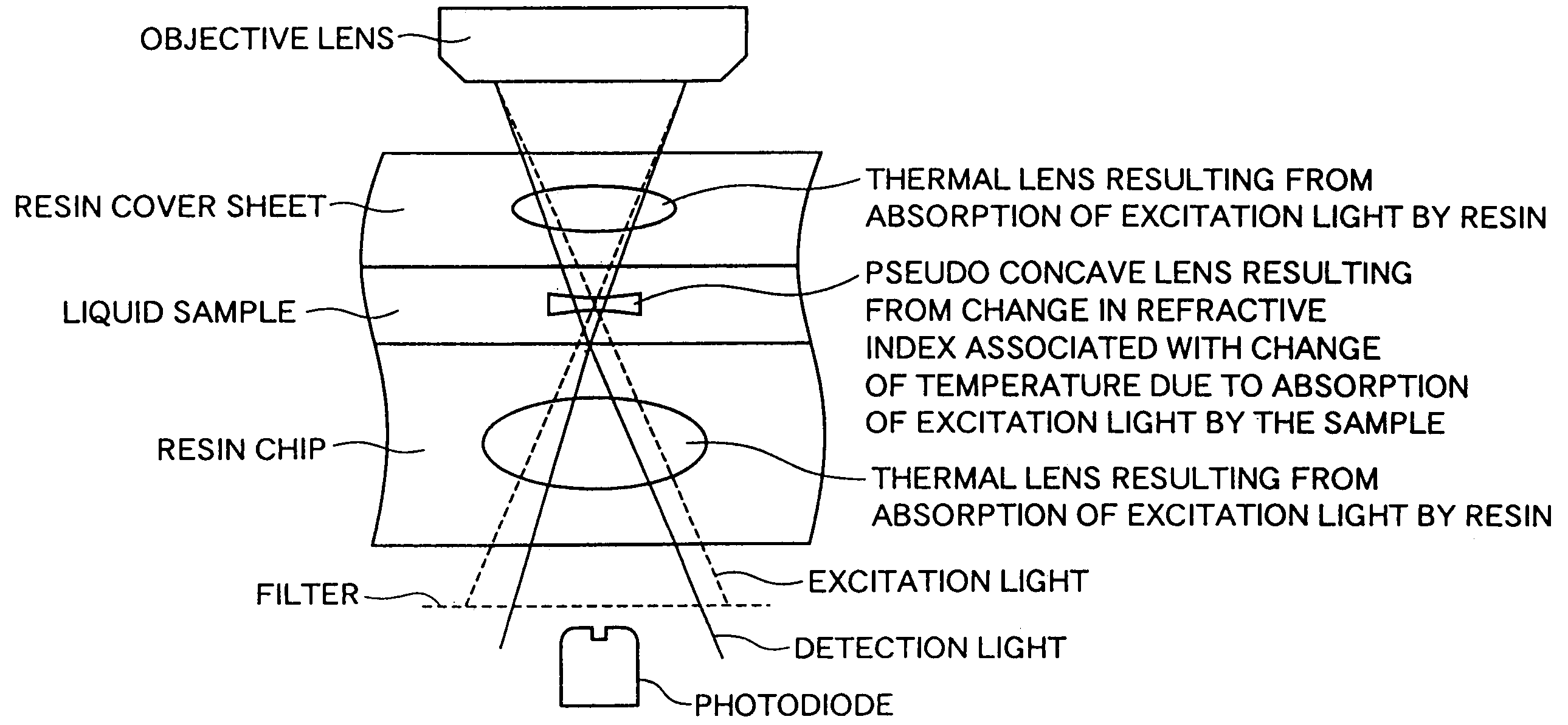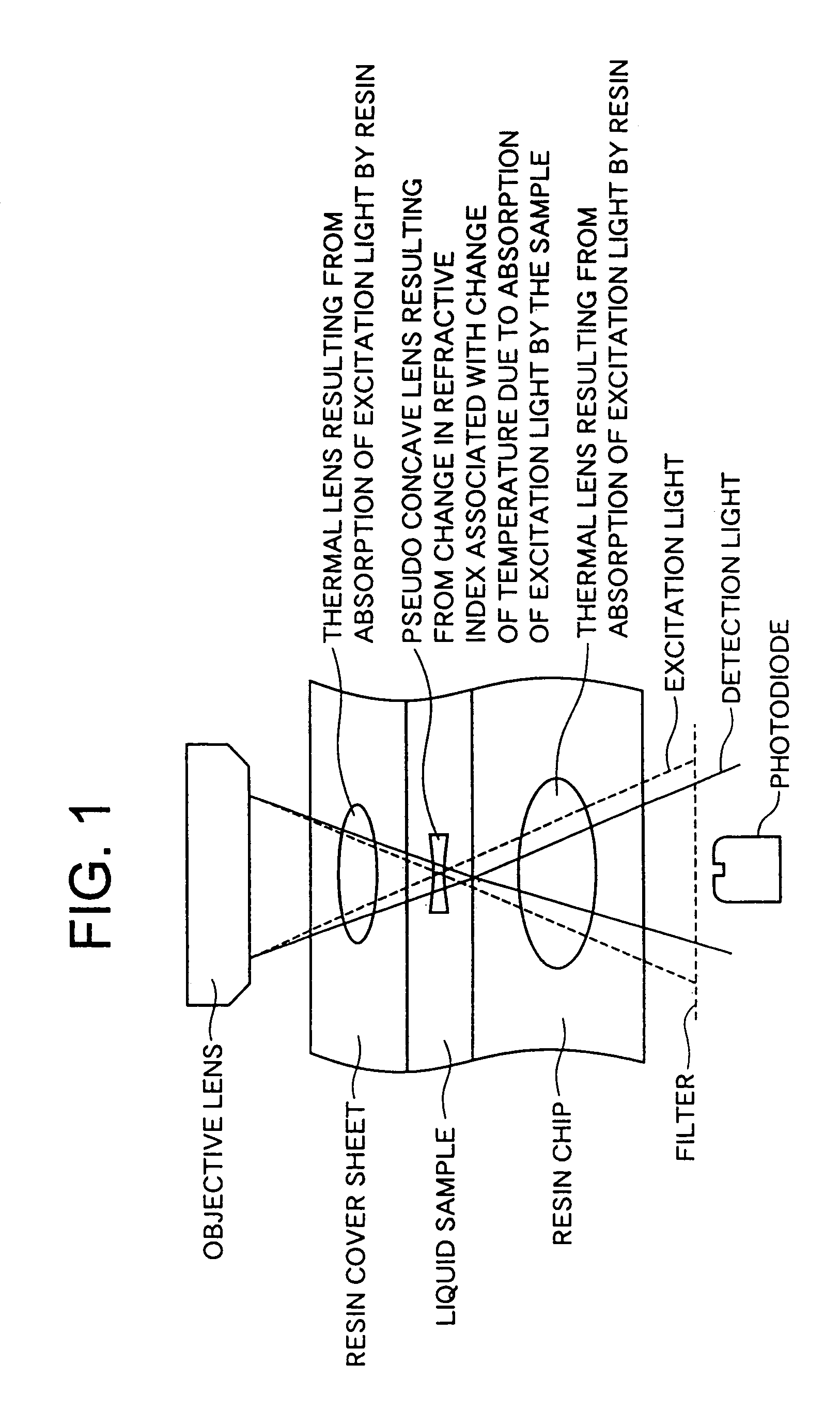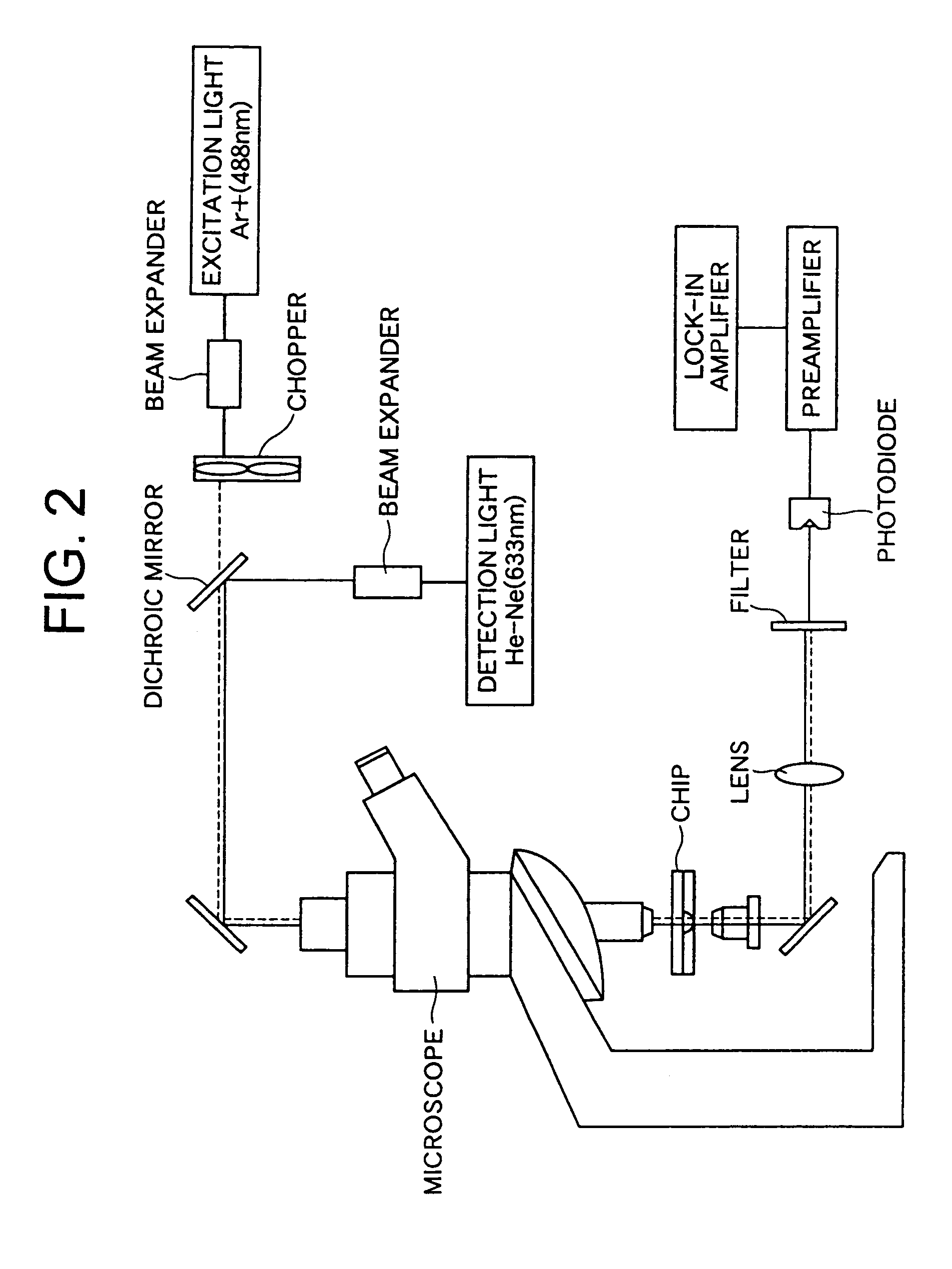Analyzer
an analytical device and analyzer technology, applied in the field of analytical devices, can solve the problems of high process cost, waste treatment, and inconvenient use of analytical devices at patient beds, and achieve the effects of reducing equipment size, reducing waste, and high sensitivity
- Summary
- Abstract
- Description
- Claims
- Application Information
AI Technical Summary
Benefits of technology
Problems solved by technology
Method used
Image
Examples
example 1
[0228]As an example of the present invention, the example in which quantitative measurement of total cholesterol in serum by the end point assay was carried out, controlling the flow of total three solutions that are a lipid measurement standard serum and two reagent solutions for detecting reaction from total cholesterol detection kit (product name: Cholesterol E-HA TESTWAKO (manufactured by Wako Chemical Co., Ltd.) will be shown. Liquid delivery was performed using the electroosmotic flow by application of voltage.
(Chip Making)
[0229]First, fabrication of a chip comprising a capillary will be described.
[0230]The absorbance of plate-like organic polymer bases was measured to predict influence on a thermal lens, providing basic data for selection the material of usable polymer bases. The measuring method and results will be described.
[0231]For measuring equipment, UV-2200A (UV-VIS Recording Spectrophotometry) manufactured by Shimadzu Co., Ltd. was adopted. For a measuring method, sam...
example 2
[0282]As one example of the present invention, an example in which total two solutions of standard serum and a reactant reagent obtained by modifying an aspartic aminotransferase (GOT) activity measurement kit (TA-LN Kainos (Kainos Laboratories Inc.)) were flow-controlled to perform quantitative determination aspartic aminotransferase (GOT) in the serum that is measured by a rate assay will be shown. Because of the rate assay, reaction stop solution was not used.
(Fabrication of Analyzer Including Chips)
[0283]First, a chip is molded with injection molding in the same way as Example 1, except that modification is made such that the pressure at which carbon dioxide is charged into the mold is 2.0 MPa, 70 NHX is used as methacryl resin, and the nest and stamper having a pattern shown in FIG. 23 is used in Example 1.
[0284]The plane plate member configuring the chip is 12 cm long and 8 cm wide and 2 mm thick, and has grooves of a pattern as shown in FIG. 23 formed thereon. Through-holes w...
example 3
[0307]Measurement of total cholesterol was carried out using a photothermal detector similar to that in Example 2, and using a Y-shaped channel chip made of PMMA (FIG. 23) made by injection molding as in case of Example 2, except that an Ar laser having an emission at 488 nm was used for the detection light. The groove width and depth of the Y-shaped channel of such a chip are 200 μm and 50 μm, respectively. Cholesterol E-Test Wako manufactured by Waco Chemical Co., Ltd. was used as a reagent. Microsyringes (manufactured by Hamilton Co. Ltd.) in which a coloring reagent and dilute standard serum respectively were coupled with the both edges of the top of the Y-shaped channel using a Teflon tube. Preparation was made so that the reagent concentration equaled a concentration defined for the reagent kit when the coloring reagent was mixed with the dilute standard serum at the flow ratio of 1:1. That is, the coloring reagent was dissolved using a half of the defined quantity of buffer, ...
PUM
 Login to View More
Login to View More Abstract
Description
Claims
Application Information
 Login to View More
Login to View More - R&D
- Intellectual Property
- Life Sciences
- Materials
- Tech Scout
- Unparalleled Data Quality
- Higher Quality Content
- 60% Fewer Hallucinations
Browse by: Latest US Patents, China's latest patents, Technical Efficacy Thesaurus, Application Domain, Technology Topic, Popular Technical Reports.
© 2025 PatSnap. All rights reserved.Legal|Privacy policy|Modern Slavery Act Transparency Statement|Sitemap|About US| Contact US: help@patsnap.com



